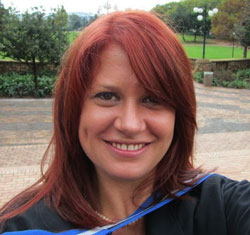Dynamite in Small Packages – Looking at Flow Cytometry
News category: Nanotech
 A flow cytometry (FC) machine is large, bulky and, to the untrained eye, a somewhat boring-looking machine. From the outside, that is. This analytical device holds the key to looking at the inner workings and mysteries of cells and of ourselves.
A flow cytometry (FC) machine is large, bulky and, to the untrained eye, a somewhat boring-looking machine. From the outside, that is. This analytical device holds the key to looking at the inner workings and mysteries of cells and of ourselves.
Capable of providing information on cancers such as lymphomas and leukaemia, chromosomal abnormalities, multi-drug resistance in cells and infectious diseases such as malaria and HIV, this cell counter, cell sorter and biomarker detector means that the uses of the FC is limited only by the creativity of scientists.
FC is a fast, automated, multiparametric and quantitative method for the analysis of the physical and chemical characteristics of thousands of living and intact cells per second in “real time”. FC combines three systems: fluidics for transporting the cells one-by-one in a stream through the device; optics consisting of lasers (commonly the argon ion laser) and filters for the illumination and detection of samples; and electronic systems for converting light into electronic signals or data. Within the optics system, beam splitters and filters are set up in the system to detect the scattered incident laser light and fluorescence caused by the samples passing through the laser. The scattering occurs due to the characteristics of the cell – Forward scattered light (FSC) provides information about the cell’s topography, cell-surface area or size, whilst side-scattered light (SSC) indicates the cells’ inner complexity and granularity. Combining FSC and SSC the computer can detect the cells’ shape, size, membrane, nucleus and surface topography, as well as its internal granular molecules. The use of fluorescent labels gives conventional FC a further axis of information: the amount of fluorescent labelling compounds attached to the cells as they pass through the optics system. This analytical technique is known as fluorescence-activated cell sorting (FACS), which has grown to become one of the major branches of FC technology.
The FACS system is based on fluorescent compounds (fluorophores) absorbing certain wavelengths of light. This causes electrons within the compound to move to higher energy levels. As the energised molecules return to their original energy states, they release the absorbed energy by emitting a photon of light – this phenomenon is referred to as fluorescence.
By attaching fluorophore to antibodies, or any other molecule capable of selectively binding to cellular structures, one has a targeted method of labelling and differentiation groups of cells by what cellular structures they possess. The fluorescence of a given cell when labelled with a fluorophore-modified antibody is indicative of the amount of cell structure present on/in the cell. By using different fluorophore compounds combined to different antibodies, a single cell can be stained with several different fluorescent labels, for the detection of multiple populations in a single sample. With the modern-day access by scientists to a range of commercially available fluorophores, it provides a way of sorting a sample of living cells into several distinct groups in real time, based on the individual scattering and fluorescent properties of each cell passing through the device.
Recently, scientists have begun to consider alternatives to the conventional fluorophores such as fluorescein isothiocyanate (FITC) and phycoerythrin (PE) by replacing them with nanomaterials, such as quantum dots (QDs). Due to their atom-like energy state levels, quantum dots fluoresce for the same reasons that the more traditional fluorophores do, while providing more fluorescent sites per particle than their counterparts. This translates into brighter, longer lasting and sharper emission of colour and creates a much more sensitive and stable means of producing fluorescent labels. FC has also been employed as an analytical technique investigating the nanotoxicology of various nanoparticles (gold, titanium oxide, iron oxide, QDs are a few examples), monitoring their uptake into cells and the cells’ subsequent survival.
FC has been applied in many fields with its areas of functionality continuously expanding. FCs main medical diagnostic uses include: diagnosis of chronic lymphocytic leukemia (CLL) via the detection of certain surface markers (namely ZAP-70 and CD38) on cells in blood or bone marrow; inflammatory reactions; diabetes mellitus or terminal renal failure and the non-invasive, early detection of several types of cancers. For the purposes of research, FC can also be used in a research capacity for: the determination of DNA and RNA content, which would allude to the cell’s current position in the cell cycle, cell kinetics, proliferation, ploidy, and aneuploidy. Using the FACS technique, protein expression on both the surface and cytoplasm of cells is a routine use for this technique. Some examples include: the detection of steroid hormone and P-glycoprotein receptors (used for the determination of drug resistance and multi-drug resistance in cancers); measuring cellular enzymatic activity and monitoring cell-to-cell adherence during pathogen-host cell invasion.
For many years, FC has facilitated us in our understanding of disease, our world and ourselves, and it is expected that nanotechnology will boost this fascinating technique even further.
By Janske Nel
